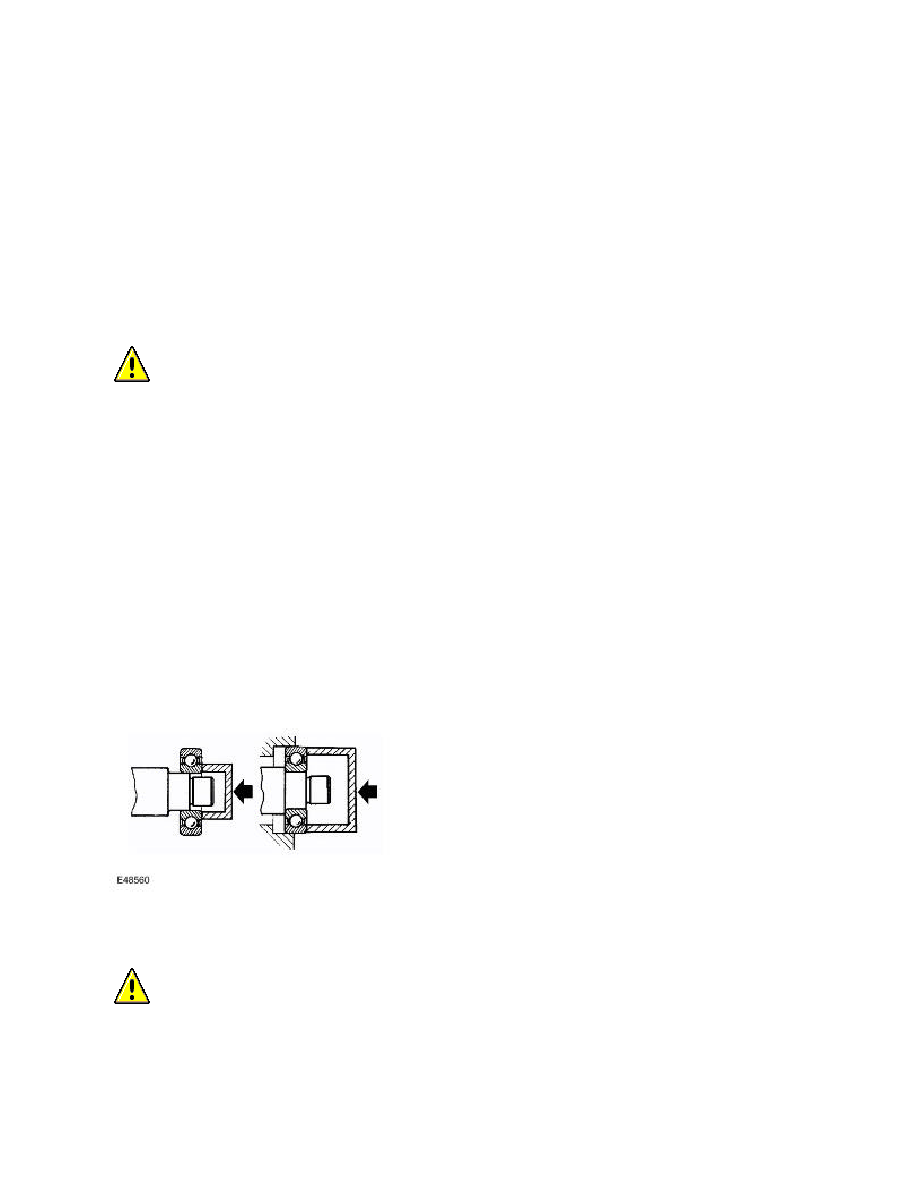LR3/Disco 3

Unless stated in a specific repair procedure, self-locking nuts i.e. those with a nylon insert or deformed thread nuts can be
re -used provided that resistance can be felt when the locking portion of the nut passes over the thread of the bolt or stud.
Unless stated otherwise, self-locking nuts once removed must be discarded and new nuts of the same type and strength
grade fitted.
Air Suspension
Always ensure that suitable eye protection is worn when working on the air suspension system.
Ball and Roller Bearings
When removing and installing bearings, ensure that the following practices are observed to ensure component
serviceability:
l
Remove all traces from bearing under inspection by cleaning with a suitable degreasant; maintain absolute
cleanliness throughout operations.
l
Conduct a visual inspection for markings on rolling elements, raceways, outer surfaces of outer or inner surfaces
of inner rings. Reject any bearings found to be marked since marking in these areas indicates onset of wear.
l
Hold inner race of bearing between finger and thumb of one hand and rotate outer race to check that it revolves
absolutely smoothly. Repeat holding outer race and rotating inner race. DO NOT spin the bearing.
l
Rotate outer ring gently using a reciprocating movement whilst holding inner ring; feel for any check or obstruction
to rotation. Reject bearing if movement is not absolutely smooth.
l
Check bearing for blueing or signs of overheating.
l
Lubricate bearing with the specified lubricant.
l
Inspect bearing surface of shaft and bearing housing for discoloration or other markings which indicate
overheating of bearing or movement between bearing and seating.
l
Before fitting bearing, ensure that shaft and bearing housing are clean and free from burrs.
l
If one bearing of a pair shows signs of wear, overheating etc., it is advisable to replace bearings as a pair unless it
is suspected that one bearing may have been faulty when fitted, was fitted incorrectly or the fault arose due to oil
seal failure.
l
Never refit a bearing unless it is in a fully serviceable condition.
l
When fitting a bearing to a shaft, only apply force to the inner ring of the bearing. When fitting a bearing into a
housing, only apply force to the outer ring of the bearing.
l
In the case of grease lubricated bearings, fill the space between the bearing and outer seal with the recommended
grade of grease before fitting the seal.
CAUTION: Service tools have been developed for removing the majority of bearings; these must always
be used where specified.
CAUTION: Service tools have been developed for fitting the majority of bearings; these must always be
used where specified.
